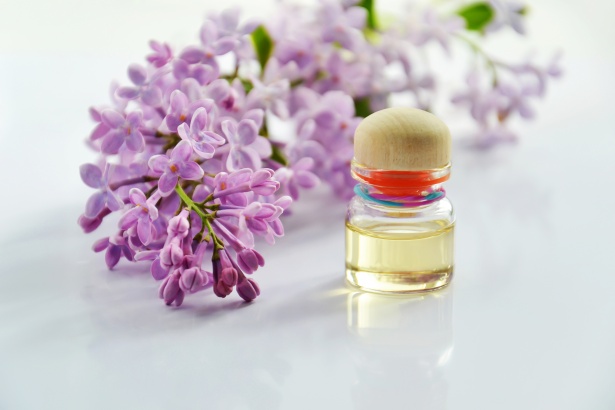A new study in Frontiers in Behavioral Neuroscience has found that linalool, one primary ingredient in lavender extract, has an anxiolytic (anxiety reducing) effect. According to the researchers, this effect is conveyed through odor—so smelling lavender extract is the appropriate way to receive this anxiety-reducing effect.
The research was led by Hiroki Harada and Hideki Kashiwadani at Kagoshima University, Japan. The researchers write that lavender extract has a long history of use for the reduction of anxiety, but scientific evidence of efficacy and mechanisms of action are sparse.

Harada and Kashiwadani conducted their tests on mice so that they could examine the mechanisms through which linalool acted. Mice without a sense of smell did not receive the anti-anxiety effect, meaning that linalool does not work directly on the neurotransmitters of anxiety, but instead is mediated through olfactory mechanisms. The researchers write that the olfactory system in mice is similar to that in humans, and it is presumed that the mechanism of action for linalool is the same.
The researchers tested the way mice acted after smelling the linalool. Mice who smelled linalool were more likely to stay in the open and otherwise act as if they were safe, while mice that could not smell linalool exhibited “anxious” behavior such as staying near walls and rarely venturing into the open.
Harada and Kashiwadani also studied the brain systems involved in the affected mice, and determined that the linalool odor eventually works on the GABAergic neurotransmitter system—the same system that is affected by benzodiazepine drugs. However, unlike those drugs, linalool takes a natural and indirect route through olfactory systems before impacting neurotransmitters.
While acknowledging that more research on the effects on humans needs to be done, the researchers write that linalool is a “convenient and promising” anxiety-reducing substance.
****
Harada, H., Kashiwadani, H., Kanmura, Y., & Kuwaki, T. (2018). Linalool odor-induced anxiolytic effects in mice. Frontiers in Behavioral Neuroscience, 12(241). doi: 10.3389/fnbeh.2018.00241 (Link)















That’s very interesting, as a benzo warrior I am delighted to see this.
Report comment
I find this experience weird. Is this the right way to test the anxiolytic effects of lavender? Should we really use laboratory mice, make them anosmic and use artificial perfumes? I find the protocol artificially complicated to give an appearance of scientificity; while this experience does not allow to make definite conclusions about the effectiveness of lavender in anxiety.
Why not do studies in real situations, with humans? If it is only a matter of practicing psychotherapy in a perfumed cabinet or in another non-perfumed one, it is a very simple experiment, and the results are immediately exploitable, without formality. The experiment will not be double-blind, but it can be controlled by testing several perfumes with the absence of perfume.
Report comment
I am going to try this lavender thing…
I am a very anxious person..
I have the most trouble EATING HEALTHY….
Report comment
Many plants contain linalool not just lavender: hops, cinnamon tamala, mugwort, Cannabis sativa, cannabis indica, etc. Some linalool containing plants are overharvested such as rosewood which grows in Brazilian rainforests. To preserve rosewood, tiny amounts of real rosewood essential oil are mixed with other linalool containing essential oils for a remarkably high quality imitation oil.
Avoid artificial lavender and look for scents that are naturally derived or plant-based. Febreeze and other products containing artificial fragrances are bad for your health. 95 percent of chemicals used in synthetic fragrances are derived from petroleum (crude oil) and include benzene derivatives (carcinogenic), aldehydes, toluene, and many other known toxic chemicals linked to cancer, birth defects, central nervous problems, etc.
Most candles are artificially scented. To enjoy a scented candle, put a drop of essential oil in the well of molten wax when burning a candle
Report comment
I drink lavender tea with other herbs to help kidney disease. I use the plain herb. I honestly cannot stand the smell of the stuff otherwise and sticking the herb anywhere near myself while I am trying to sleep will keep me awake all night. I think it smells obnoxious.
Report comment